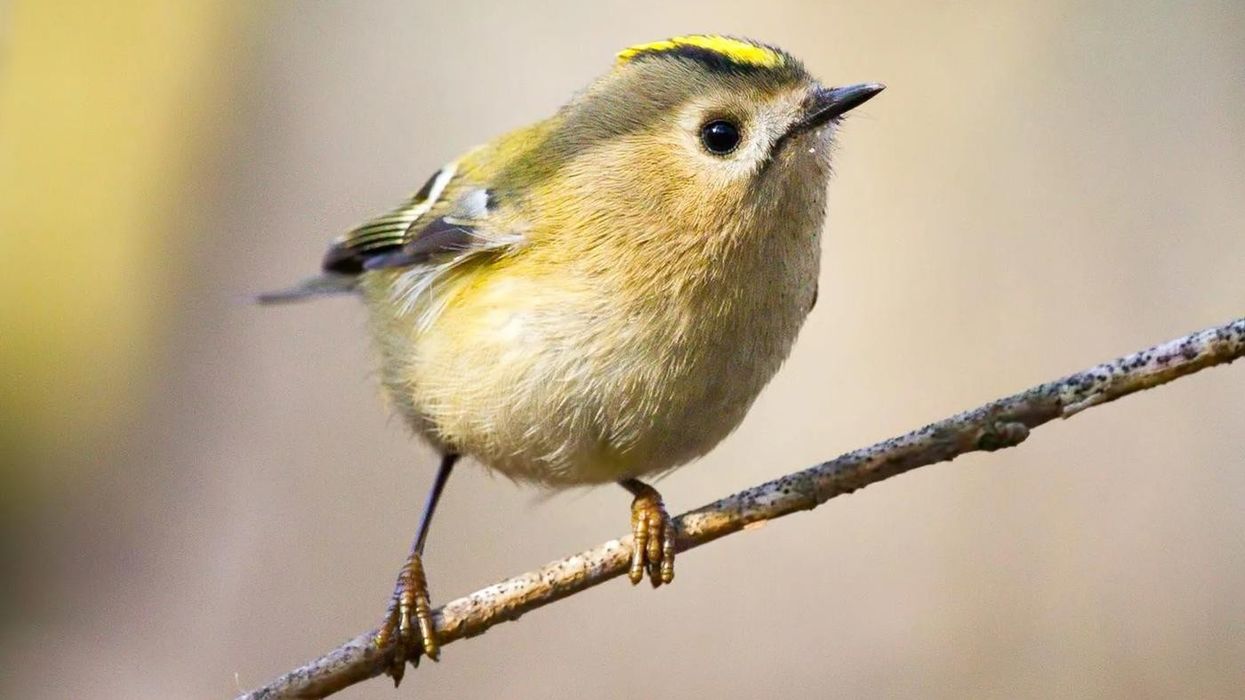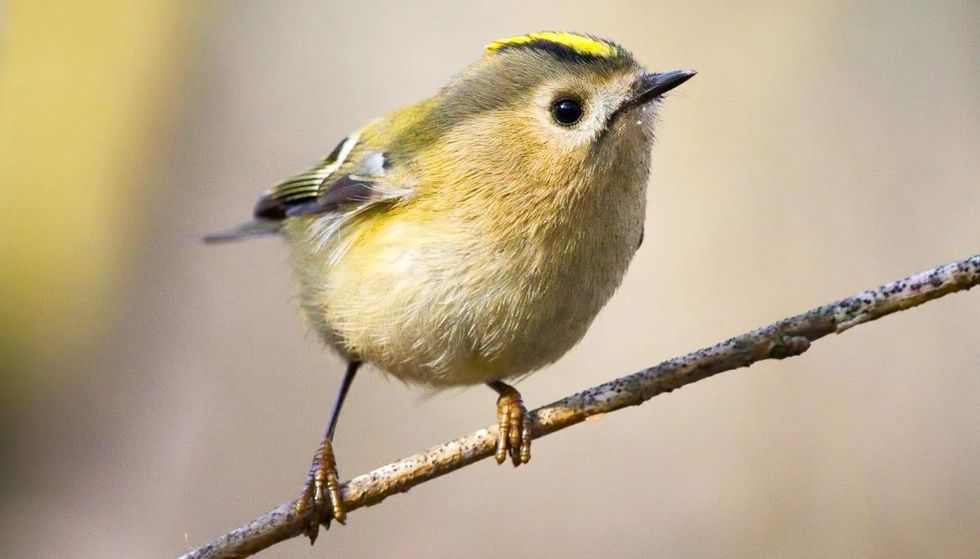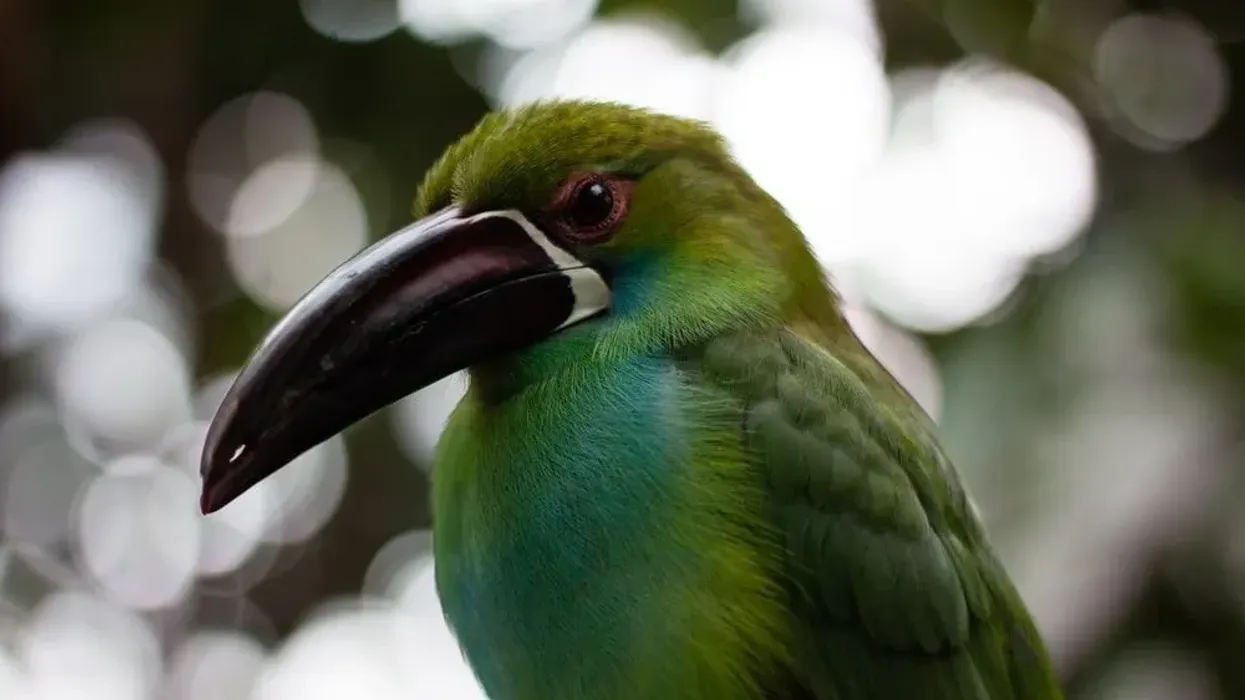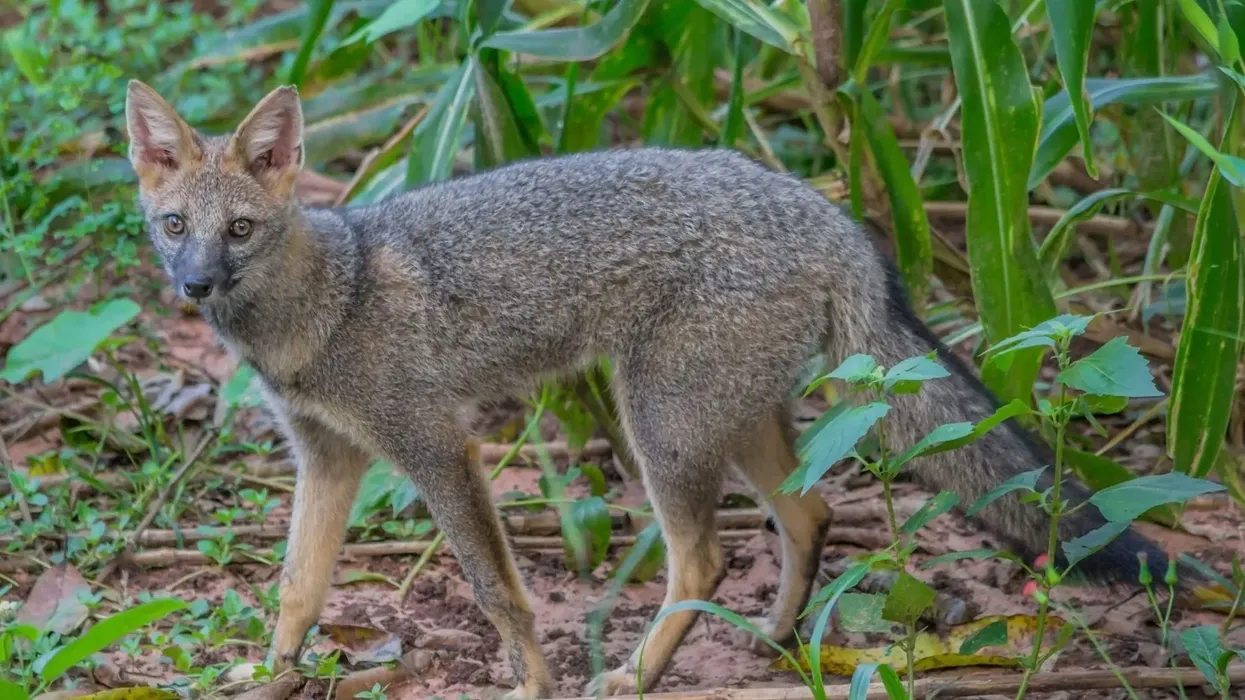Do you like small birds like the oak titmouse? If yes, then you'll love the goldcrest!
The goldcrest (Regulus regulus) is a very small bird that belongs to the kinglet family. They are commonly found in coniferous and mixed woodland habitats, forest habitats, plantations, and gardens with conifers.
Goldcrests are unobtrusive yet active. Their thin bill is perfectly suited to pick insects out from between pine needles.
The bird's common and scientific name both came from its colorful golden crest feather, which could also be the reason that this bird is known as the 'king of the birds' in European folklore. These little birds are grayish-green and there is a black and yellow stripe on its head, with an orange center among adult mates.
A female goldcrest does not possess an orange center on her head. This bird has a pale belly.
The very small size of the goldcrest, with big dark eyes and a distinctive feather color combination, gives an impression of innocence and this species has several subspecies distributed across a very large distribution range. Migration activity can be noted among these birds, especially during winter when birds from the north and east migrate towards the south.
If you are enjoying reading these amazing facts about the goldcrest, you can also check out our articles on the Cape starling and the Gloster canary.
Goldcrest Interesting Facts
What type of animal is a goldcrest?
The goldcrest is a very small-sized bird. It's a passerine bird in the kinglet family.
What class of animal does a goldcrest belong to?
This species is a type of bird, that more specifically belongs to the Aves class. Aves are characterized by having feathers, a warm body, a toothless bill, a high metabolic rate, and a strong yet lightweight body skeleton.
How many goldcrests are there in the world?
They have a total population estimated at around 80–200 million.
Where does a goldcrest live?
Goldcrests can be spotted in Asia and Europe across these two continents. Though their numbers have been steadily declining, the bird continues to inhabit a wide variety of countries including Japan, China, South Korea, North Korea, and Afghanistan in Asia and Belgium, Greece, Denmark, and Ireland in Europe. They are anything but rare in the areas they inhabit!
What is a goldcrest's habitat?
A pine forest is the most common habitat to find a goldcrest in. Goldcrests can be found in gardens, as well. However, they favor fir, spruce, and pine tree forests as their natural habitat.
They are often spotted dwelling around high mountains at elevations close to 9,800 ft (2987 m). They like conifers too. During winter migration, when they are not around conifers, goldcrests can be spotted in large mature trees and hedgerows, as well.
Who do goldcrests live with?
This bird usually lives in a small community of about eight birds and will migrate in small groups with no more than 12 birds.
How long does a goldcrest live?
Goldcrests live in a range of eight months to two years. During the winter season, their population reduces significantly, however, because of the higher breeding rate they get back to the normal population within a short period of time.
How do they reproduce?
Goldcrests are monogamous breeders. This means that both the male and the female have only one partner. Wooing displays and breeding begin in late April or early in May.
The sedentary adult male usually employs singing as a method to establish territorial dominance and attract females. The male also happens to display his bright orange crest to his mate.
Conifers with a greater height tend to be divided among several breeding pairs at different levels of the trees, so several territories can exist in the same tree. The nest is on the outer branches of the tree, is hammock-shaped, and well balanced. The nest is built mainly by the male.
Goldcrests' breeding season starts in late April and produces between 6-13 smooth, non-glossy, pale eggs with several markings, one per day. The eggs are approximately 0.55 × 0.43 in (1.39 × 1.09 cm) in size.
Gestation is for about 16 days, by the female, starting before all eggs have been laid. The female broods and cares for the juvenile during the first seven days.
The male provides a diet to the female at the nest and both adults will feed the juvenile, which fledges at around 17- 22 days. Goldcrests can sometimes produce up to twenty juvenile birds in a breeding season.
What is their conservation status?
The goldcrest is classified as of Least Concern on the IUCN Red List.
Goldcrest Fun Facts
What do goldcrests look like?

The goldcrest is a bird with a lot of colors for starters. The bird conventionally has an olive green body with the breast area being white.
Apart from this, it has two white wing bars. The face of the bird is a sight to behold, with a crown on the head.
There is a slight difference in the color scheme of the male and female counterparts of the bird. The male bird sports a color combination of orange and yellow while the female is devoid of the orange stripes.
The goldcrest is the smallest European bird, only 3–3.7 in (8.5–9.5 cm) in length with a wingspan of 5–6 in (13.5–15.5 cm).
Goldcrest looks similar to a sparrow. The juvenile is similar to the adult, but has comparatively pale upper parts and lacks the colored crown.
How cute are they?
Like most small birds, for instance, an American tree sparrow, the goldcrest is a very cute bird. Their small size, hyperactive nature, high-pitched chirping, distinct feather color, and especially noticeable crest in contrast with the otherwise pale body make them look extremely cute.
How do they communicate?
Goldcrests, or Regulus regulus, communicate primarily through acoustic means. The voice of the goldcrest is very high pitched and is commonly heard with a repeating rise and fall, ending with a great flourish for its choruses. The call of goldcrest (Regulus regulus) generally sounds like 'see-see-see see-seesisyu-seesiyu-sweet'.
How big is a goldcrest?
The goldcrest is the smallest European bird, only 3–3.7 in (8.5–9.5 cm) in length with a wingspan of 5–6 in (13.5–15.5 cm). They are even smaller than a sparrow or a warbler. For example, the pine warbler is longer at 5-5.75 in (12-14 cm).
How fast can a goldcrest fly?
Goldcrest flies at a speed of around 15-19 mph (24-31 kph).
How much does a goldcrest weigh?
The goldcrest weighs only 0.16–0.25 oz (4.5–7 g).
What are the male and female names of the species?
They do not have distinguishing names for males and females.
What would you call a baby goldcrest?
Juvenile goldcrest does not have a specific name. Some call them chicks, while the terms juvenile and hatchling are also used.
What do they eat?
Goldcrest's common diet includes small insects, spiders, moth eggs, caterpillars, bugs, flies, springtails, etc. In winter, this bird can be spotted gathering food with other birds.
This bird is often edgy and jumpy in a movement when hunting for food like spiders and is known to store seeds for later. Though primarily an insectivore, this bird also eats the sap from trees and bits of leaves and other plant-like material when gathering food on the ground.
Are they dangerous?
This bird basically poses no danger to a human being. Since their diet consists of spiders, insects, larva, seeds, etc. Hence, they directly or indirectly do not cause any harm to the human population.
Would they make a good pet?
Goldcrest is not suitable to have as pets as they are wild animals.
Did you know...
The little goldcrests are often overlooked because of their tiny size; however, they are is surprisingly fearless, sometimes they come as close as within 10 ft (3 m) of humans, especially during the winter season.
This species breeds when food is adequate and the daylight remains for a longer hour.
During the winter season, goldcrests need to eat a lot and can’t survive during the day for over an hour without feeding.
These birds are always on the move; in winter they must feed for at least 90% of each day just to stay alive.
Naming the goldcrest bird
The 'goldcrest' name came from the distinguishing colorful orange-yellow crown for adult male birds and yellow crown for adult female birds. Apart from the head of this bird, the body coloration is usually pale.
The scientific name Regulus regulus which actually means king or knight originally came from folklores of Europe, where these birds are called as 'king of the birds'.
Comparisons with similar birds
Goldcrest is a similar bird to warbles, sparrows, or firecrest. However, they are so small they are even smaller than warbles, wrens, and oak titmouse.
While the goldcrest and firecrest are easily confused, they do have some fundamental differences. The firecrest has a white supercilium and a black stripe through each eye. In the case of habitat, goldcrest can be spotted in the garden as well, however, it is difficult to spot a firecrest in a place other than woodland.
Here at Kidadl, we have carefully created lots of interesting family-friendly animal facts for everyone to discover! Learn more about some other birds from our black-capped gnatcatcher facts and giant kingfisher facts pages.
You can even occupy yourself at home by coloring in one of our free printable goldcrest coloring pages.










